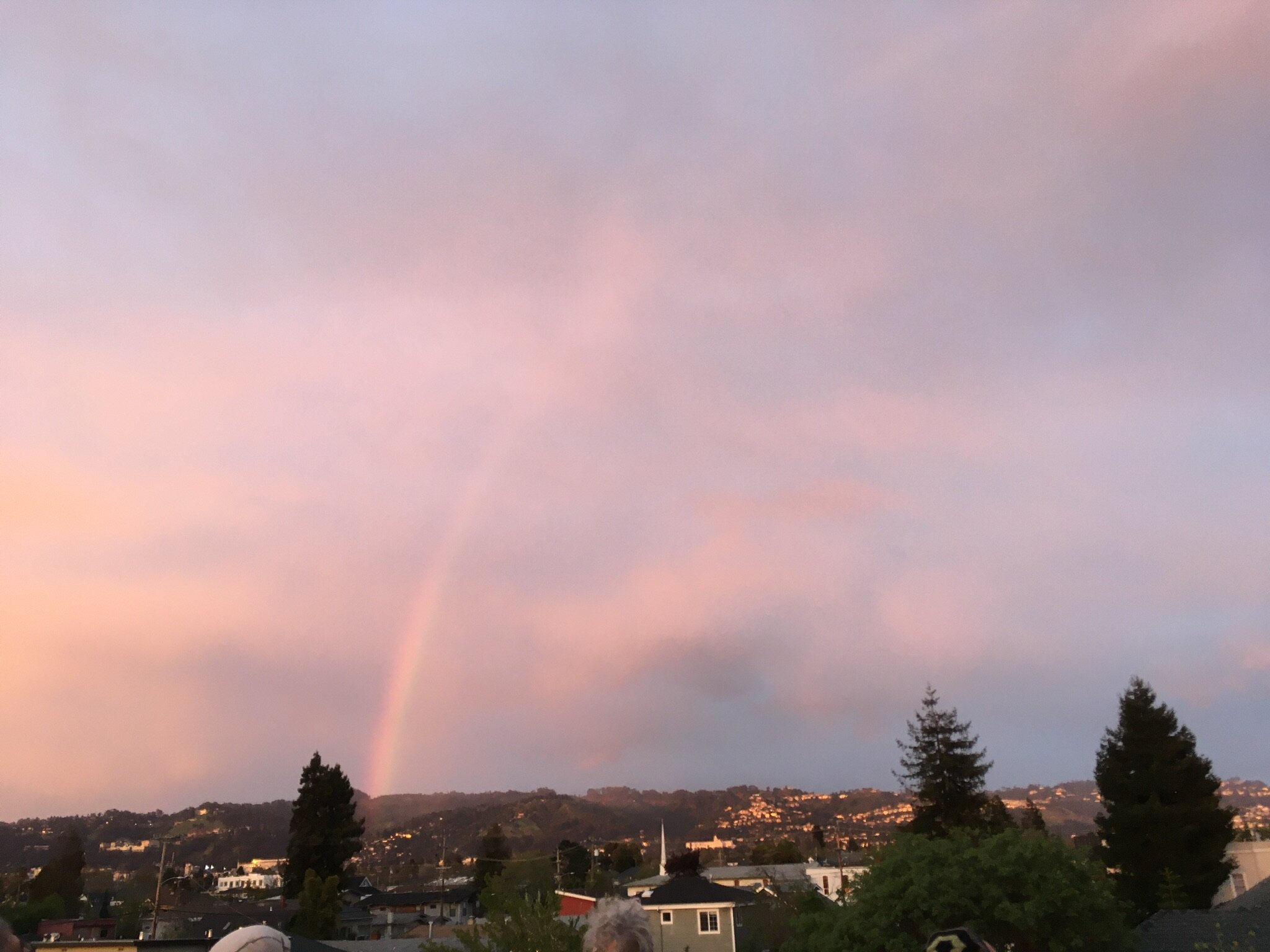
Popularizing a systems approach to culture will take a while. I’ve begun to sketch out a roadmap knowing it may take lifetimes to explore, create, and ground-truth at any scale.

a start
articulture.systems hopes to inspire with a simple idea: What might emerge if our cultural landscape was understood more as a system than as a collection of individual elements? This would apply at a personal scale, all the way up to a global scale. It’s about interconnection over separation.
I plan to explore this here, invite folks to consider the ramifications and see what emerges. If there’s greater interest in this, perhaps we can build up a body of thought, experience and practices to help us all cultivate a more resilient culture at a time when we urgently need something different. A systems approach could create space for collective action and accountability, particularly as it relates to social and ecological justice.
I’ve listed these as steps and I can imagine some sort of progression but realistically, they are likely to happen out of order and simultaneously as well. Please take this as a guide to some of the tasks involved. As things progress, I expect we’ll find others…

on language
I figure some thoughts on the words I use on this site might help. This short video (same one as on the home page) can set the stage. In it, I describe the following terms:
an artwork -
By this I mean what our industrial growth culture thinks of as art. It could be a sculpture, painting, dance, fashion, writing, tattoos, song, performance, installation, food, architecture, etc. Generally, it’s a specific thing or event you can point to. It has a name and date and author and there’s a sense that it could be moved someplace else in time or place and it would still be itself. In that sense it is a way of defining a boundary around something by calling it art. It doesn’t even have to exist anymore, living on as a reference in a book with photographs and descriptive text is enough. There are countless books and clever essays about this phenomena. Anyone who might want to share some further resources and links about this urge to claim and capture aesthetic experiences, below, please feel free…
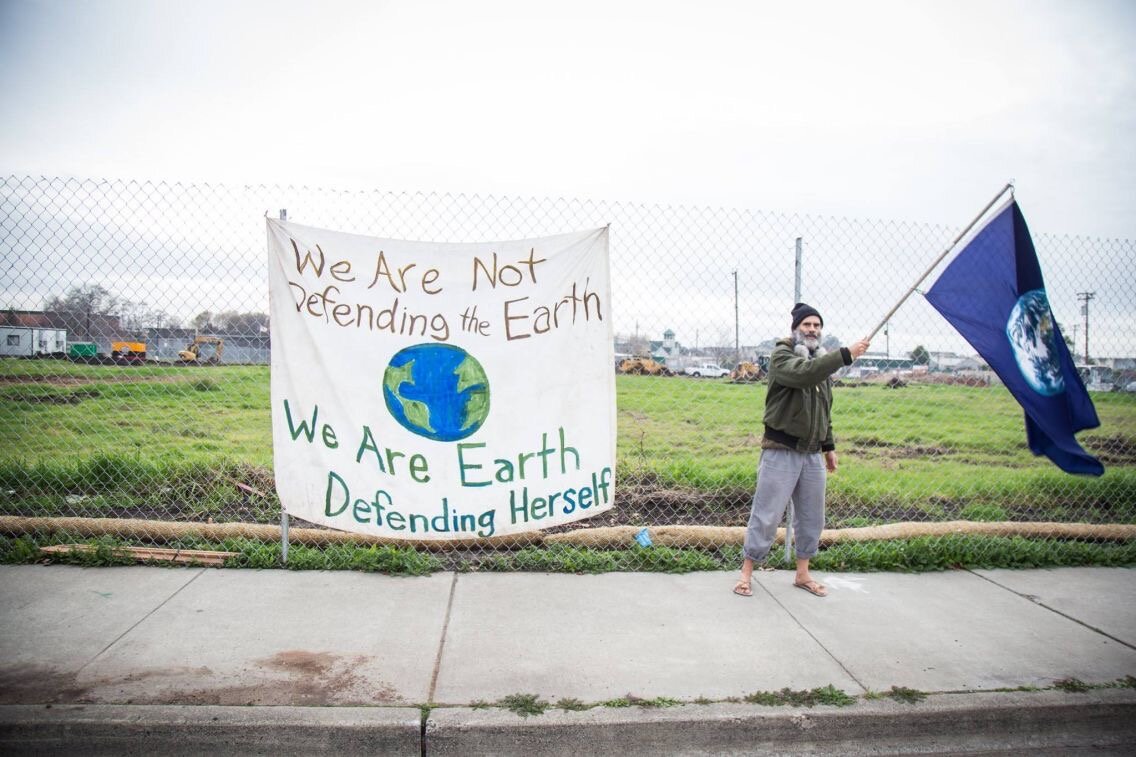
naming things
I can only imagine how our ancient ancestors felt about the Earth, Pachamama, or the vast cosmos and their place in it. I expect those who study our prehistoric kin do what they can with the stories, context, remains and artifacts available to develop models for what these ancient relatives’ inner lives were like.
Given how embedded these people were within the diversity of life around them, the seasons, the cycles of what we call nature and the universe, I can barely begin to grasp how their "art" as we understand it today, supported their long-term survival and happiness, but I expect it did and pretty much had to. I’m also aware that there are many indigenous cultures today that have kept this holistic and vital sense of cultural interdependence alive despite the pressure of industrial colonization and consumer capitalism. My heart and recognition goes out to them for their resilience and bravery…

taking steps
(or at least writing about them)
I welcome suggestions and as always, would love to know about related resources or other people who might be researching this general topic. It seems like a gap, so I'm diving in. I did the same in 2000 when we started greenmuseum.org. Our hunch that environmental art was an emerging movement ready to dive into the mainstream worldwide proved accurate. Because of that, I was able to contribute to the field as a whole to some degree, which was fun/overwhelming.
I'm particularly interested now, in the lived experience making regenerative culture, ultra-low footprint, net-zero-carbon lifestyles attractive and resonant. I think the gift-ecology, off the grid, art and farming satyagranjero movements might have some insights here, as well as Homefulness urban freegan activists, integral nonviolence folks decolonizing white supremacy, patriarchy and other forms of oppression, people exploring traditional cultural roots and deep culture, engaged monastics and giftivists everywhere. For the bulk of human history people have been living holistically within their bioregional means. There’s really no end to the possibilities if we focus on interconnections instead of things…
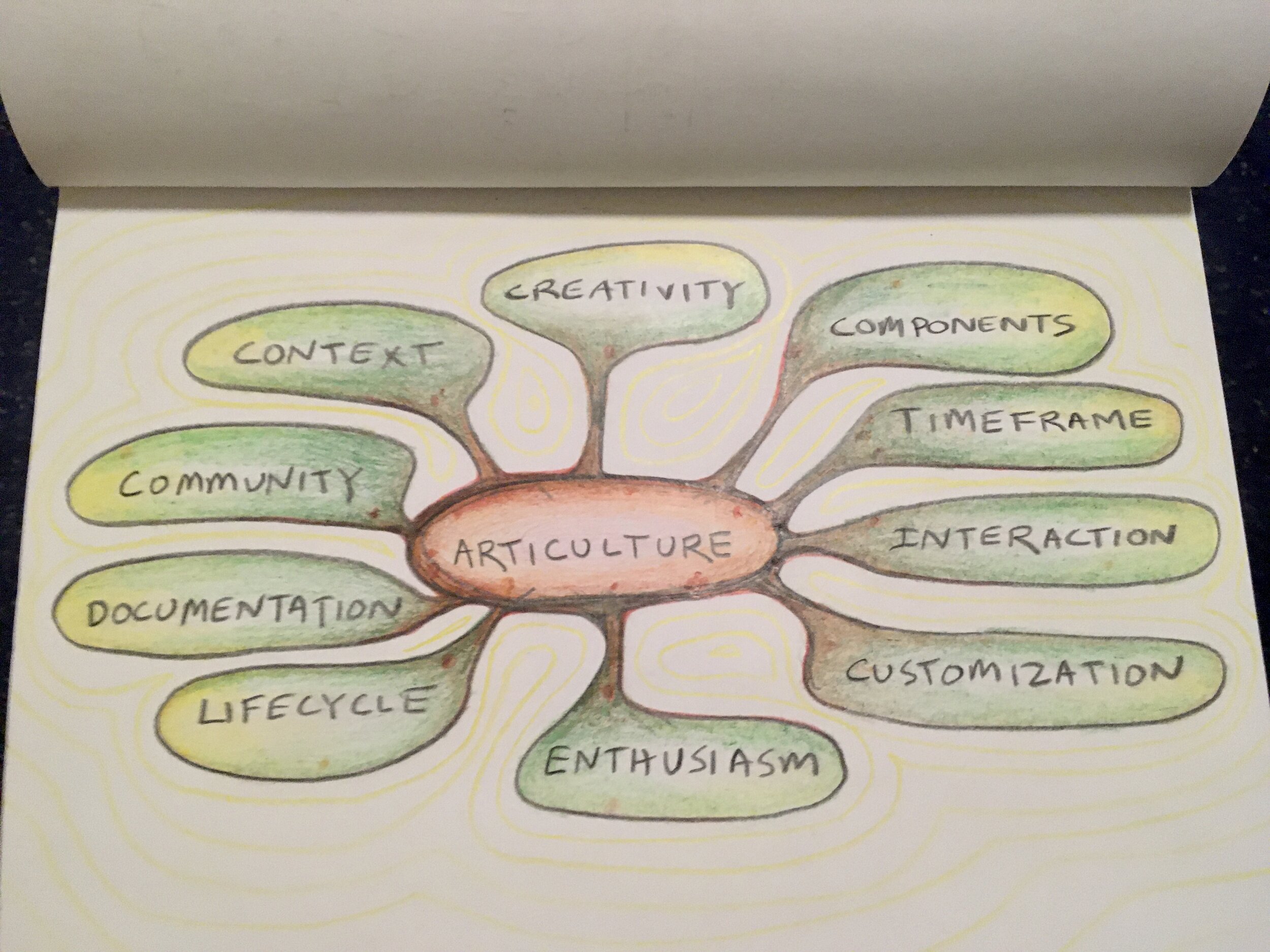
radius of variables
A systems approach to art and culture inspires Sam’s nerdy side, and a number of potential variables emerge.
This is what I mean by these terms:
Creativity: Trying something new. Pushing the edges of innovation. Surprise us.
Components: How many elements are needed to make an effective system? Is it a diverse mix of elements engaging a range of senses? (See five questions)
Timeframe: How long will your interventions last? Is there a commitment to long range impacts or regenerative elements?
Interaction: How does your system begin to engage others? How much participation is possible, useful, realistic? …
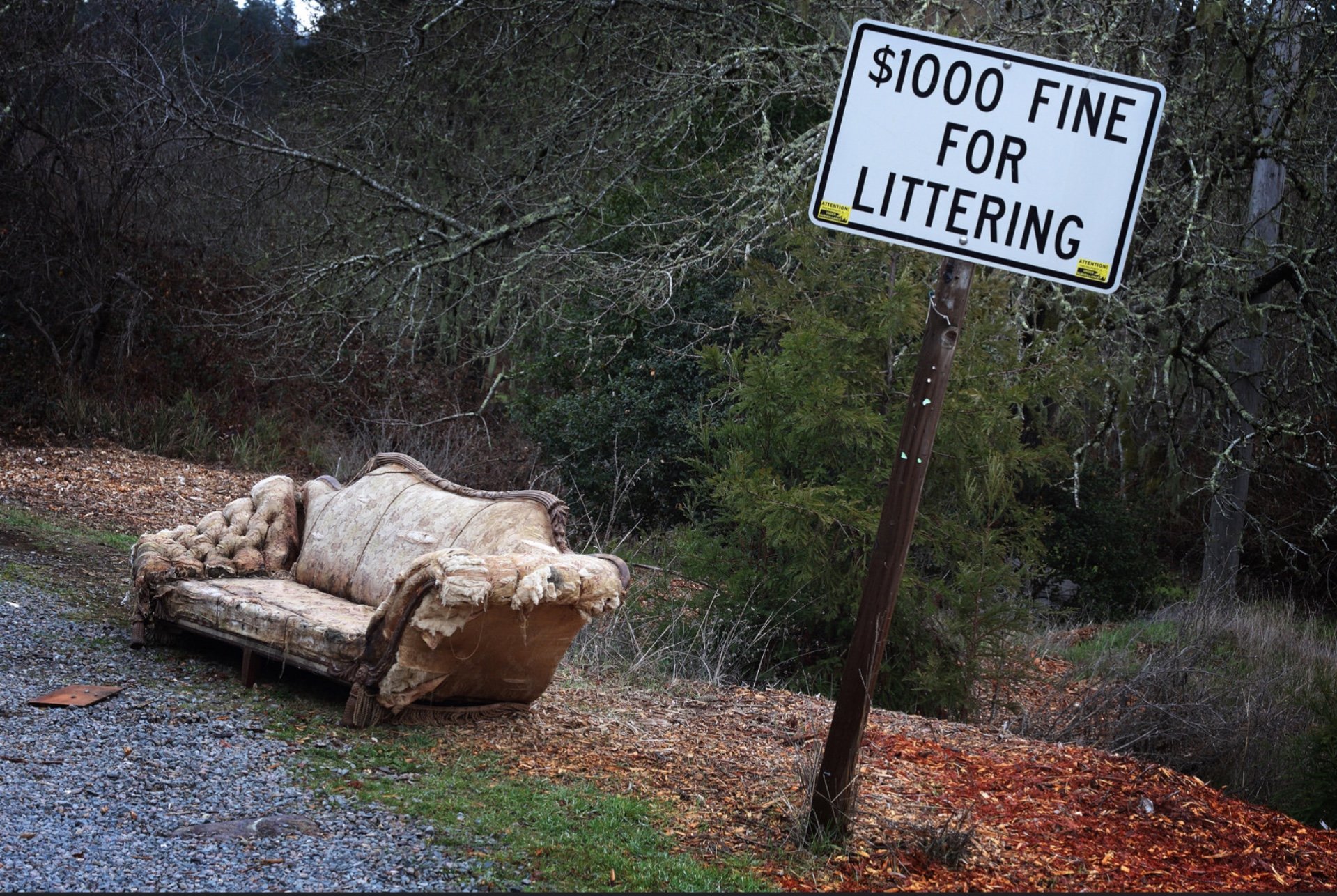
the impediment
On the home page, I wanted to welcome visitors and highlight a core insight that launched this whole articulture initiative. It’s the notion that:
Our contemporary “western” industrial idea of “art” is rooted in the illusion of separation which is itself an impediment to a more holistic, integrative, “regenerative” culture.
First, a little context. During my near-decade working on greenmuseum•org (2000-2008), I wore the sparkly hat of an environmental and eco-art cheerleader. With my colleagues, I tried to share the best examples I could find from what was then, an emerging field (since the ’60s) that was just beginning to take off. I spoke, wrote, organized, and connected people and ideas from around the world, and did everything I could to raise awareness of what was happening in the generative mix of art and ecology to help inspire the creation of new work. It all felt important, even urgent…
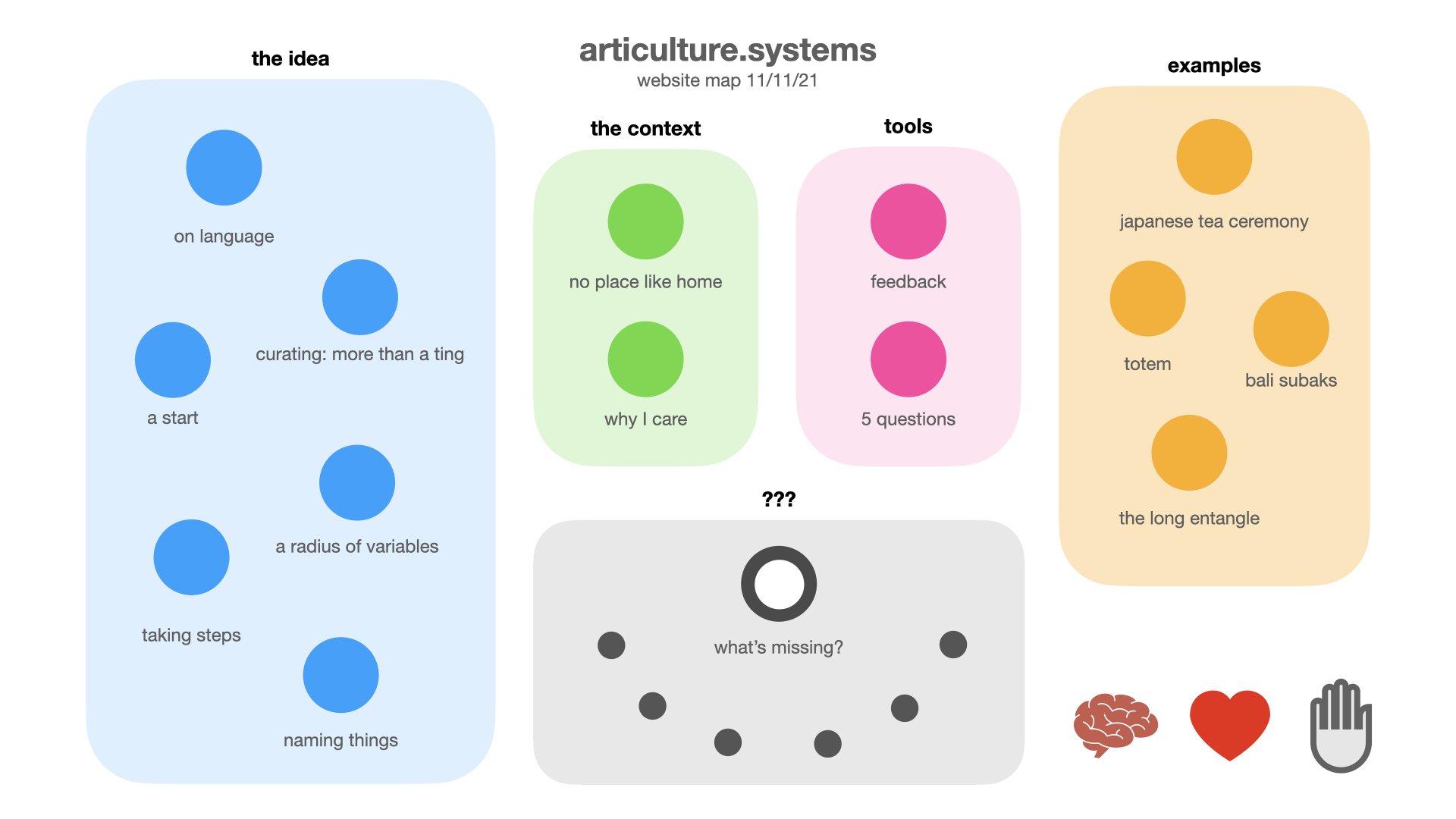
a map
I’ve been reflecting on what this site is so far and what’s missing. I figure we have “head”, in the posts titled the idea, the context, and tools, “heart”, in the examples of art-systems and articulture that have so inspired this journey. We could certainly find more tools, more refinements to the idea and updates to my context as I learn more.
What I think is missing most from this site and is the weakest part of all this, currently, is the “hand” part of the head/heart/hand trio. How do we take this articulture idea and apply it practically to the world?…

curating: more than a ting
If for Beuys, “everyone is an artist”, is everyone also a curator?
I'm interested in the ways elements of "culture" - everything from sculpture and painting to music and household crafts, cooking, theater and poetry - relate to each other, blend, support, riff, dance with people and place and sing with awareness of deep time and future generations.
In cities and colonized spaces where ties to preindustrial traditions are generally weaker, the role of cultural weaver is often in the hands of the "curator" or perhaps a "curatorial team". They apply these skills to institutions, museums, concert halls, parks, festivals, and even cafés, usually for a brief but intense period of time and then move on to the next theme or concern or location altogether. Sometimes an author or art critic may weave a bundle of ideas and images together in a written piece to make a point. Rarely, however, are these themes about helping people shift the way they actually live in a sustained or multigenerational way…